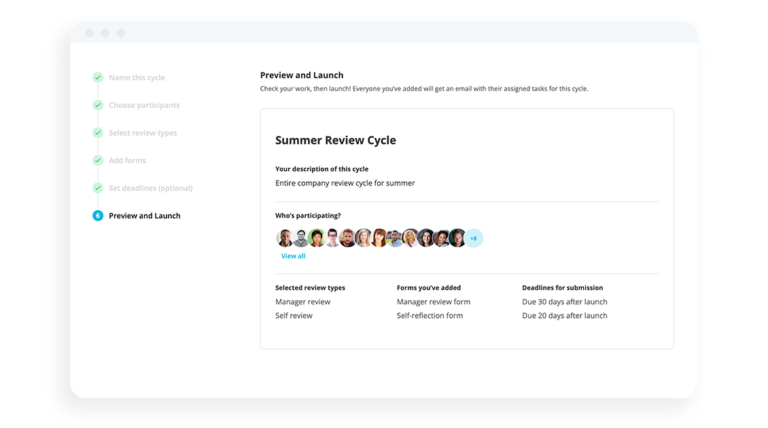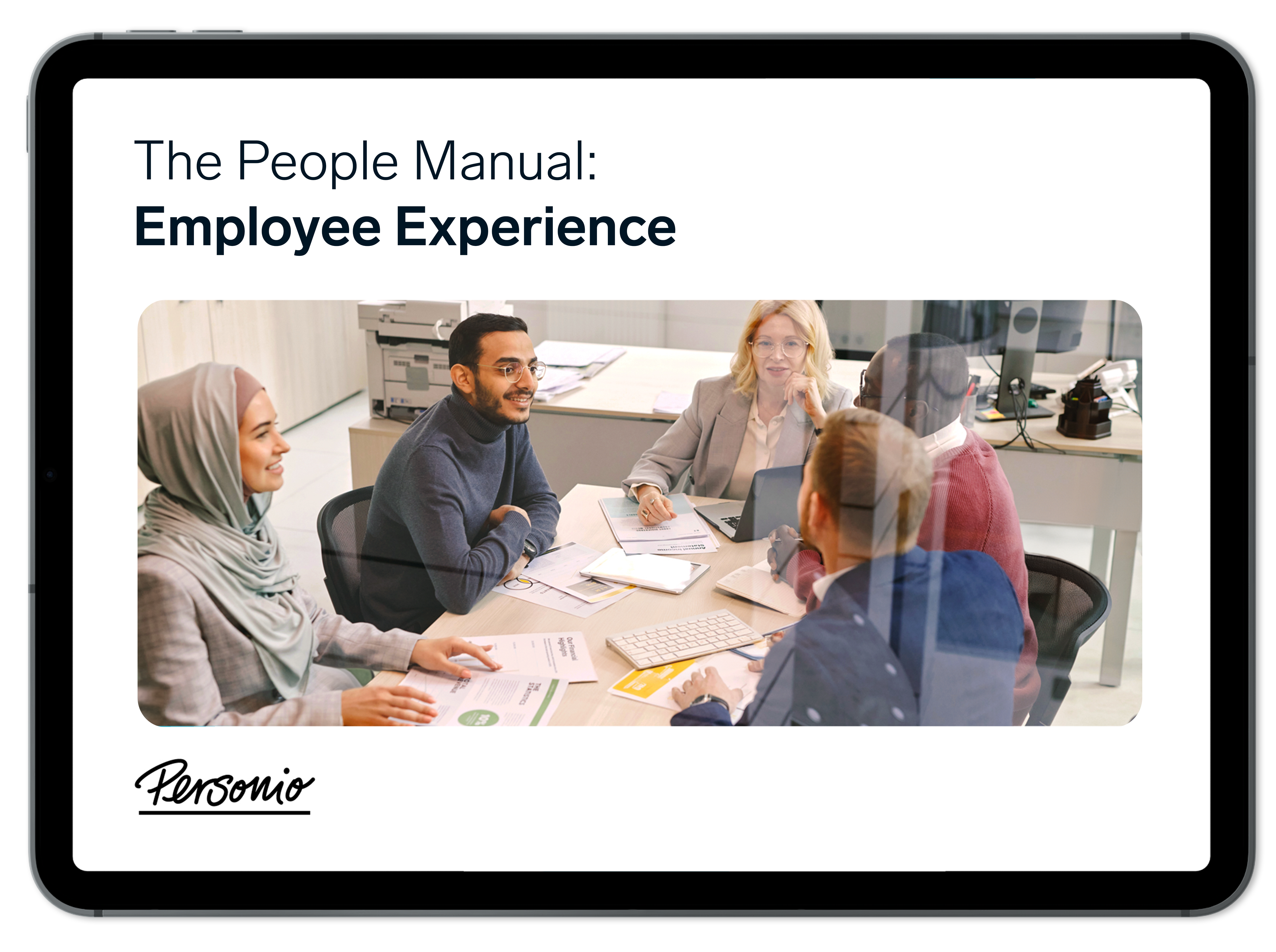What is Continuous Professional Development?

Encouraging a supportive learning culture at work is key to a happy, healthy work environment. That’s why continuous professional development (CPD) is so important. Companies that embrace an organisation-wide CPD culture encourage growth, reflection, commitment and dedication.
Ready to focus on every element of employee experience? Download our guide.Contents
- 1What is Continuous Professional Development?
- 2What is the Continuous Professional Development Cycle?
- 3What is the Importance of Continuous Professional Development?
- 4Are There Types of Continuous Professional Development?
- 5How Do You Help Employees Make a CPD Plan?
- 6How Can HR Encourage Continuing Professional Development?
What is Continuous Professional Development?
Continuous professional development (CPD) is how professionals maintain and evolve their skills, knowledge, experience and understanding. CPD requires employees to consciously and proactively do, track, document and reflect on activities that make them better at what they do.
CPD examples should be practical and relevant to employees’ current or future jobs. One of the best ways of ensuring continual professional development happens is by creating a plan or having a structure so the learning isn’t done randomly or failed to be done at all.
For example, a marketer learns to bake the perfect choux pastry in their spare time. That’s admirable, but it’s not CPD. But, if a vegetable chef who wants to become a pastry chef does this, it’s a great CPD activity.
What is the Continuous Professional Development Cycle?
The CPD cycle is more about what employees do during the CPD reflection process than when they do it. Here are six key stages as part of the continuous professional development cycle:
Planning – Identifying where progress can be made
Action – Participating in activities that ensure development
Review – Taking a step back and seeing what was learned
Application – Embedding lessons into daily work
Transparency – Sharing what was learned to help others
Reflection – Taking stock of the impact made
It’s easy to think of a CPD cycle as a specific period of time – say, a year. But, that really isn’t the right way to go about it. Even if it feels completely natural.
That’s because most professional organisations requiring CPD hours, including those governing nurses, Chartered Surveyors, Chartered Accountants – or any of the approximately 400 professional bodies in the UK, representing 13 million professionals – require qualified individuals to complete a certain number of hours each review and assessment cycle.
What is the Importance of Continuous Professional Development?
Continuous professional development is important for individuals because it keeps their thinking fresh, their skills relevant and their motivation high. Benefits of CPD for individuals include:
Opportunities for upskilling training
The ability to show their commitment to self-development and professionalism
Keeping up to date (avoid becoming obsolete) – so they can provide a better service and keep their hand in, especially with skills they may not have used for a while
Enhancing their skillset and abilities
Helping them adapt to changes and stay up to date with current trends
Learning new skills or becoming aware of new knowledge
Levelling up their profile
Avoiding skills gaps
Preparation for jobs of the future
Advancing the body of knowledge within their profession
Preventing them from becoming jaded with their chosen career (thanks to an influx of new knowledge and ideas)
CPD is also important for organisations and employers because having an open attitude to learning and development is key for attracting and engaging talent and should form part of a great talent management strategy. It’s also a good sign of a healthy corporate culture.
Ultimately, it shows that you, as an organisation, are good at embracing change and reacting to shifts in your industry. It doesn’t just help improve employee retention, it also encourages productivity because a motivated workforce is more efficient.
Are Processes Getting in the Way of Development?

Skip all those cumbersome processes by automating performance with Personio today.
Find out moreAre There Types of Continuous Professional Development?
Typically, CPD can be structured, reflective or unstructured. Also known as active learning, passive learning or self-directed CPD, these three types have different focuses:
Structured or active learning usually involves formal learning or training – like courses, workshops, certified events, seminars or conferences.
Reflective or passive learning happens when participants absorb information less formally. For example, they might read news articles, listen to podcasts, or read books that promote their education in their job.
Unstructured learning or self-directed CPD is what happens when employees do all the other things in preparation for their learning – like reading industry journals, books or articles.
CPD can take the form of formal learning, practice-based learning (job training or learning on the job), professional activity (over and above a normal role), self-directed learning (activities done without being asked) and various other types.
To help inspire your workforce, here’s a list of several possible CPD examples:
Attending workshops or conferences
Attending webinars or seminars or presentations
Professional networking
General networking (e.g. on social media) if it’s job-related
On-the-job training
Getting a promotion
Work shadowing
Secondment to another department or location
e-Learning or online courses
Formal academic study
Giving presentations
Sitting on a professional committee or panel
Reading books, articles, whitepapers or professional journals
Doing general or specific research (over and above your job requirements)
Coaching or training others
Being a mentor or being mentored
Writing or being an author – of books, articles, or even contributing on social media.
How Do You Help Employees Make a CPD Plan?
A CPD plan makes it easier to document learning and helps employees remember what they’ve done when the CPD cycle is over! A CPD plan can be a list of the number of hours, and how they will be spent. It could start with a specific career goal, desired skill set or area of improvement. For example, staff might be encouraged to do CPD as part of a performance improvement plan, or come up during a staff appraisal.
Employees who are required to commit to a certain number of CPD hours per year – especially if they have to do it to retain membership in their professional body – are wise to plan their CPD in advance.
But, all employees who undertake CPD should have a goal and a plan to make sure they end up doing the CPD, rather than just making it a nice-to-have. After all, a goal without a plan is just a wish.
When creating a CPD plan, start with SMART goals (specific, measurable, achievable, realistic and time-bound), then build activities around these – including what to do and when.
To make a plan, start by asking yourself these questions:
Where are you? (assessment)
Where do you want to be? (future goals)
What do you need to get there? (resources – e.g. time, money, investment)
When are you going to do it? (e.g. mornings, evenings, monthly, weekly)
When are you going to reflect on what you’ve done? (e.g. weekly, quarterly, annually)
How will you know when you’ve done it? (anticipated results)
Then put together a plan that lets employees answer these questions. Ensure it includes goals and deadlines and – most importantly – set time aside in an employee’s diary to make sure they actually do the things they’ve planned to do!
Half a decade of insights on employee experience

Our "People Manual" covers all things related to employee experience and developing initiatives that result in more engaged employees. Grab your free copy right now.
Download It TodayHow Can HR Encourage Continuing Professional Development?
It’s easy to encourage employees to take responsibility for their ongoing learning and continual professional development if you give them opportunities and incentives.
Organisations may consider hiring CPD training providers to teach staff specific skills. These could be as little as an hour or two, or a full training programme taking many weeks.
Organisations can also create valuable employee training programs or invest in upskilling training as part of a formal learning and development (L&D) work.
All of these can be counted as CPD.
To help document progress, performance and keep track of goals, book a demo today to see how Personio’s comprehensive and streamlined HRIS can help.

